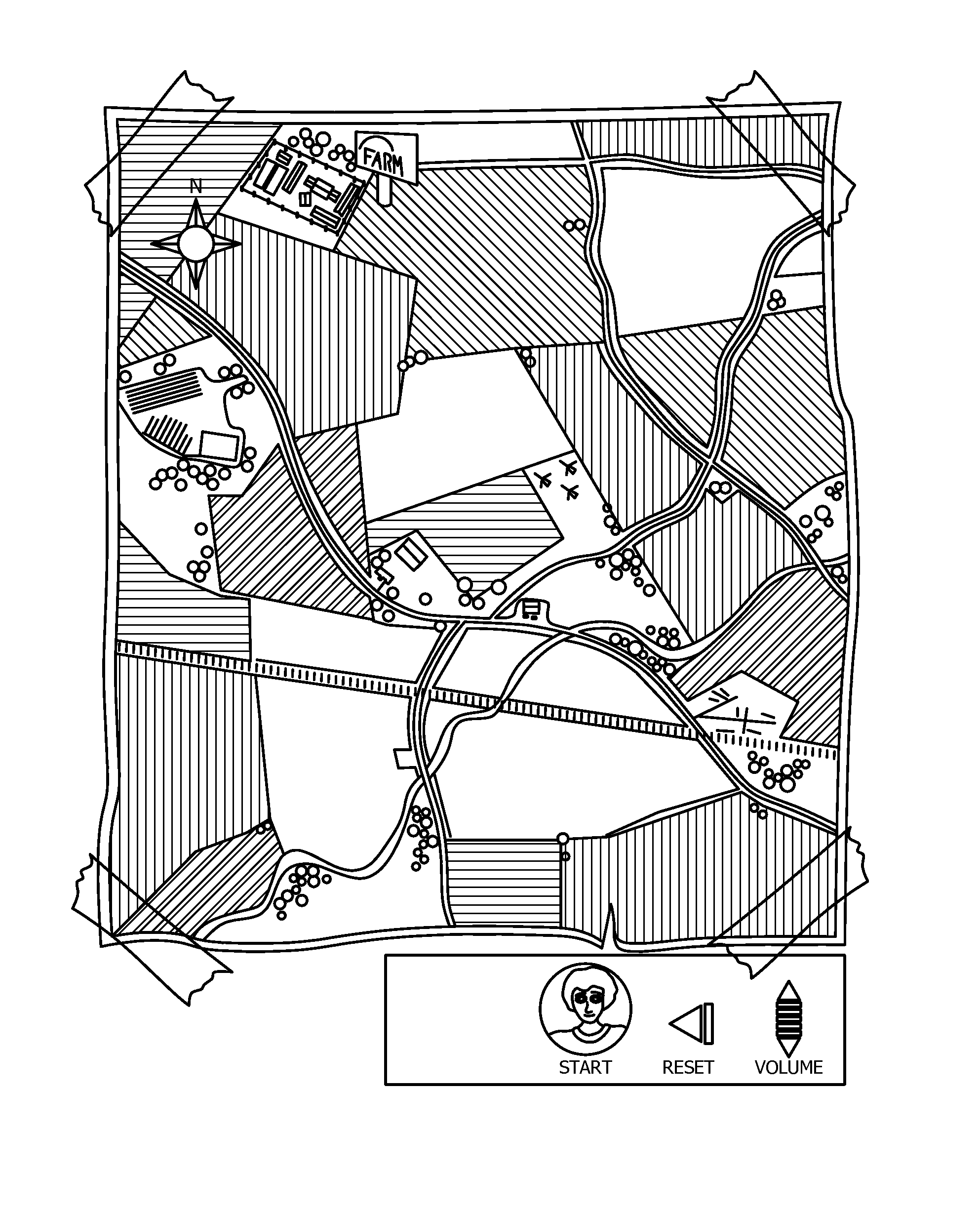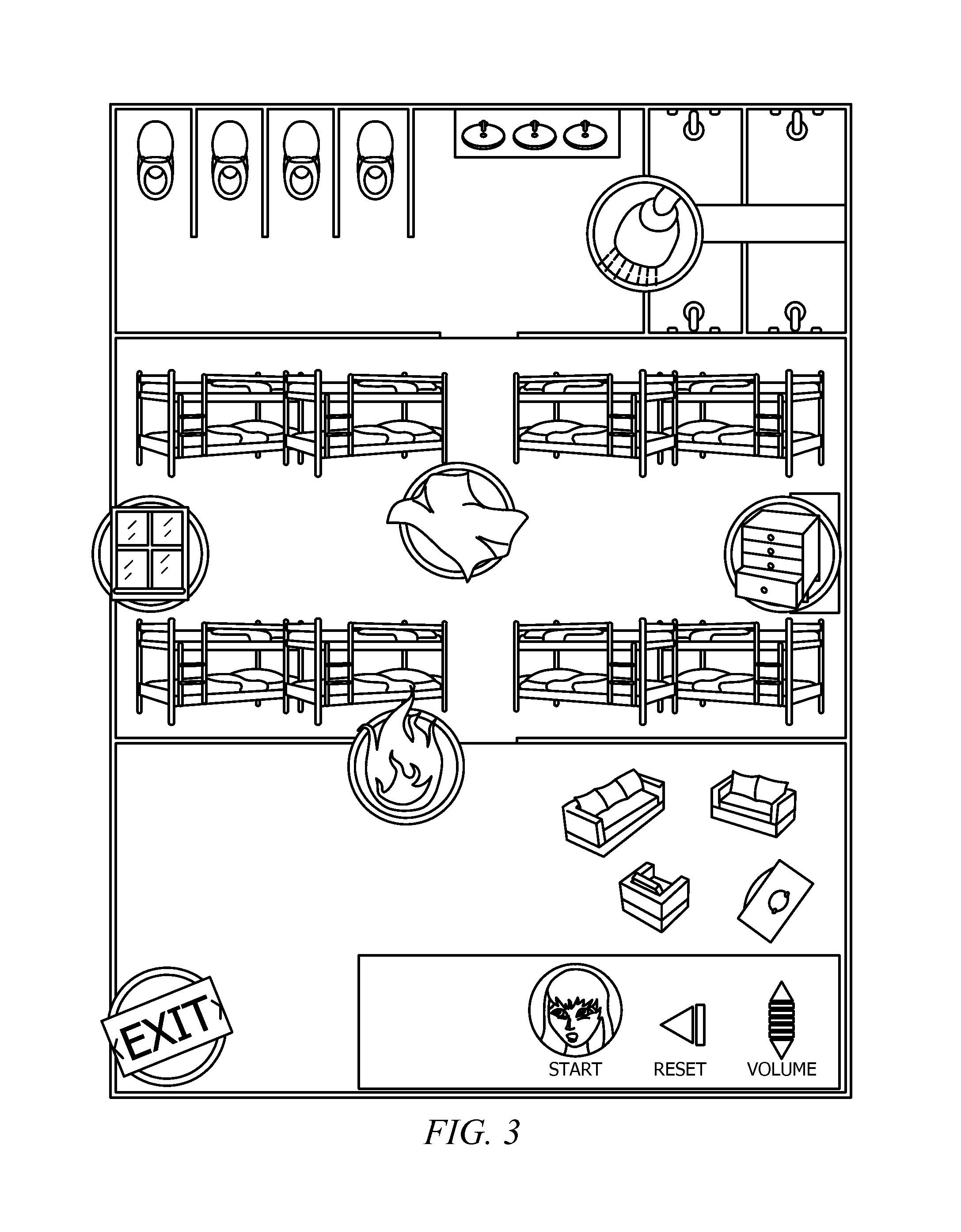Interactive book and spatial accountability method
a technology of spatial accountability and interactive books, applied in the field of interactive reading, can solve the problems of difficult to represent space from reading a text, poor handling of spatial dimensions, and often ignored spatial information, and achieve the effect of promoting online accountability and promoting awareness
- Summary
- Abstract
- Description
- Claims
- Application Information
AI Technical Summary
Benefits of technology
Problems solved by technology
Method used
Image
Examples
example 1
[0042]A test group of fifth and sixth-grade students were provided copies of the hybrid hardcopy book and electronic “camera” FlyPens. The group consisted of one fifth grade girl, two sixth grade girls and one sixth-grade boy. The girls were avid readers and had a moderate to low interest in video games, while the boy was a light reader with more of an interest in computer games. The students were asked to read the prototype book as well as interact with interspersed maps, via wireless electronic “camera” FlyPens, to encourage them to create and maintain a more spatial situation model of the story, as well as to pay more attention to other dimensions of the situation model of the story, such as causal, temporal, protagonist and intentionality. The FlyPen collected data from each map and processed it in real-time using an embedded C++ program, providing auditory feedback sent to the reader, seen in FIG. 5.
[0043]Students were first given a brief orientation to the book and the FlyPen ...
example 2
[0047]Forty-six undergraduate college students with an average age of 20.4 years (9 male, 37 female), participated in the test study. Participants took part in the one session experiment for five points of extra credit in their course.
[0048]Three naturalistic short stories, requiring approximately five minutes each to read, were drafted, taking place in a zoo, a boat, and a small private museum. See below for one of the narratives. The configuration of the space was important to the causation in each story. The narratives were equivalent in length, complexity of the spaces, the number of protagonist changes of location (sentences with spatial discontinuities), the number of characters, and the number of objects in the stories. Each story had six spatial discontinuity sentences (sentences with change in location). Since the number of syllables is the most significant factor in reading time of sentences, each spatial discontinuity sentence had 17 syllables, a convenient number for wri...
PUM
 Login to View More
Login to View More Abstract
Description
Claims
Application Information
 Login to View More
Login to View More - R&D
- Intellectual Property
- Life Sciences
- Materials
- Tech Scout
- Unparalleled Data Quality
- Higher Quality Content
- 60% Fewer Hallucinations
Browse by: Latest US Patents, China's latest patents, Technical Efficacy Thesaurus, Application Domain, Technology Topic, Popular Technical Reports.
© 2025 PatSnap. All rights reserved.Legal|Privacy policy|Modern Slavery Act Transparency Statement|Sitemap|About US| Contact US: help@patsnap.com



